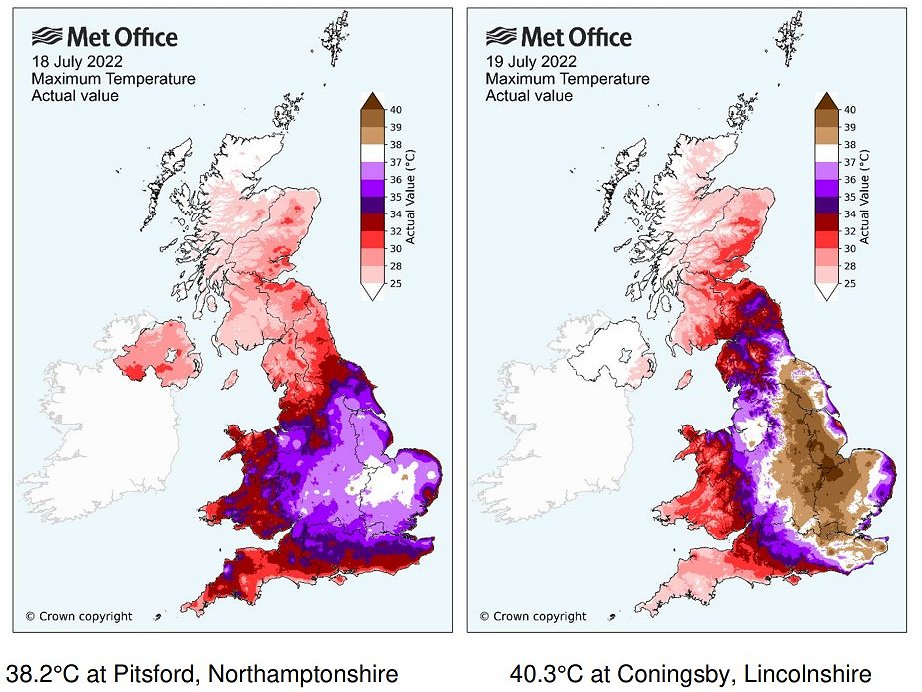
UK heatwave ‘far more intense and widespread’ than comparable events

By the Climate Centre
(This story is edited from a Met Office press release issued on Friday.)
A published event summary from the UK Met Office says the extreme heat earlier this month, which saw 40°C recorded for the first time in Britain in the modern era, was “far more intense and widespread than previous comparable heatwaves”.
A Met Office press release said many long-running stations with 100-plus-year records saw their highest-ever temperature, some by “extraordinary margins“ of up to 4°C.
A new national record was provisionally reached on 19 July, with 40.3°C recorded at Coningsby, Lincolnshire, exceeding the 2019 record by 1.6°C; a night-time record of 25.8°C was set at an airfield on the southern outskirts of London.
Temperatures on both 18 and 19 July exceeded 38°C, only the third and fourth days among observations going back to the middle of the mid-19th century when this threshold was crossed; the others were 10 August 2003 and 25 July 2019.
The Met Office’s Mike Kendon, who produced the review, said: “Temperatures on 18 July were exceptional but they moved 2°C to 4°C higher on 19 July, making this date unprecedented in the context of long-term climate records.
“What’s particularly notable is how much more widespread the heat was from this event than the previous two occurrences of temperatures in excess of 38°C in the UK.
“Temperature records tend to get broken by modest amounts and by just a few stations, but the recent heat broke the national record by 1.6°C…”
Many stations with 100-plus-year records
saw their highest ever temperature,
some by ’extraordinary margins’ of up to 4°C
This month’s heatwave was preceded by the Met Office’s first-ever red warning for extreme heat, and its longest-ever amber warning with a lead time of six days.
The widespread nature of the heat was highlighted when the average maximum temperature across the whole country exceeded 30°C for the first time.
Kendon continued: “It’s notable that of the 30 hottest days by UK area averages, 14 of these have occurred this century.
“While five dates in the list are from the infamous [British] summer of 1976, it should be noted that the heat seen then was much less intense than … 2022, although much more prolonged.”
The Met Office report adds: “A UK national record of 36.7°C stood for almost 80 years before it was broken on 3 August 1990. This has then been broken a further three times since the turn of the century due in part to the background warming as a result of human-induced climate change.
“It has been shown that climate change is making UK heatwaves more frequent, intense and long-lasting.”
The extreme heat in western Europe and North Africa contributed to wildfires and health alerts in many countries earlier this month, and major interventions by Red Cross and Red Crescent societies.
Met Office Chief Scientist Stephen Belcher said: “In a climate unaffected by human influence, climate modelling shows that it is virtually impossible for temperatures in the UK to reach 40°C.
“Under a very high emissions scenario we could see temperatures exceeding 40 degrees as frequently as every three years by the end of the century in the UK.”
The peak of the UK heatwave earlier this month on a Met Office chart, with the darker shaded areas in south-east England closely overlapping its first-even red alert for heat, issued shortly beforehand. (Image: UKMO)